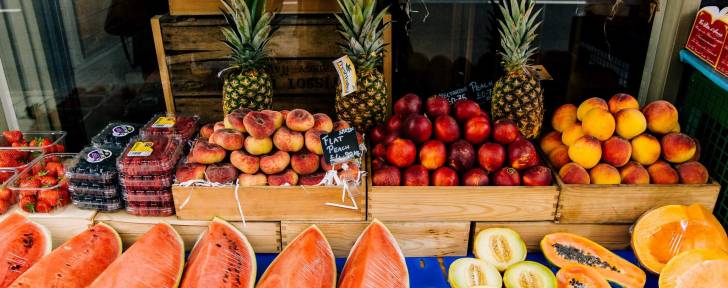The best food for athletes
Par LaurentPublié le 20/08/2019 à 18h39 — modifié le 21/08/2023 à 02h00 Temps de lecture : 2 minutes

There is an energy bar for each occasion; just read the composition before eating it.
Energy bars are found everywhere, and rightly so. They are delicious, convenient and some can be quite healthy. But given that there are hundreds of brands and tastes, how do you find the best one? Before a race, you need the right amounts and carbohydrates to boost your energy without disturbing your intestines. After that, you'll need more protein. If you are monitoring your weight, think before adding 200 kcal to the meter. There is a bar for every occasion, but read the composition carefully because many energy foods contain the same ingredients, calories, fat and carbohydrates as candy. These tips, adapted from a guide by journalist Runner's World Kelly Bastone, will help you stay on the track.
1 A STIMULANT BEFORE THE START
You're about to go out and you realize you haven't eaten for hours, or you need a little mid-course snack: eat a bar containing maltodextrin, an artificial carbohydrate that's assimilated faster than others. It is also milder on the stomach than concentrated glucose from energy drinks. Maltodextrin is quite bland, so it is a good choice if you want to avoid the persistent taste of very sweet gels and gums. Think carefully if you think you might just be a little hungry and want a bar. Most athletes say that if they resist the urge to eat before a short session and start running, their appetite decreases and they can finish without any difficulty.
2 ENERGY AT MID-TERM
For medium to long runs from 1 h to 1 h 30, you will need an easily digestible source of energy that will ensure stable blood sugar levels. Take a honey-based bar: it contains carbohydrates (glucose and fructose) that provide fast and long-lasting energy. Fructose is assimilated relatively slowly and its energy is delivered gradually, while glucose acts quickly. In addition, studies have shown that consuming both types of carbohydrates simultaneously increases the amount of energy available for the muscles and improves performance. Unlike table sugar, honey contains traces of B vitamins, calcium and iron. Avoid bars high in protein or fibre: the body does not get much energy from protein during the race and these 2 nutrients take longer to digest. For obvious reasons, consuming a lot of fibre just before or during exercise is probably not a wise choice.
3 LUNCH SUBSTITUTES
If you have to skip a meal during a competition, choose a bar that is high in calories, fibre and protein. It should contain 250 to 400 kcal, 9 g of protein and high-fibre carbohydrates such as seeds, oats and dried fruit. According to Christine Gerbstadt of the Academy of Nutrition and Dietetics, you will need fat to help you absorb vitamins more effectively and maintain your fitness.
4 IMMUNE STIMULANT
After an intense session, you will need antioxidant-rich foods to recover. According to Tara Gidus, "selenium, vitamin E and other antioxidants help protect the immune system. Dried and nuts are provided with them; cherries and red fruits contain phytochemical compounds that prevent heart disease and cancer and reduce inflammation.
5 RECOVERY
If you want a nutrient-rich snack but don't have time to look for the perfect complete food, eat a bar containing an average amount of protein (10 to 15 g) and fibre (2 to 5 g) for about 200 kcal. After the race, these nutrients help to recover and moderate hunger. For optimal recovery, take a bar 30 minutes after the start of the race. If it was particularly long or strenuous, eat a light meal of protein and whole wheat carbohydrates 1 to 2 hours later.







